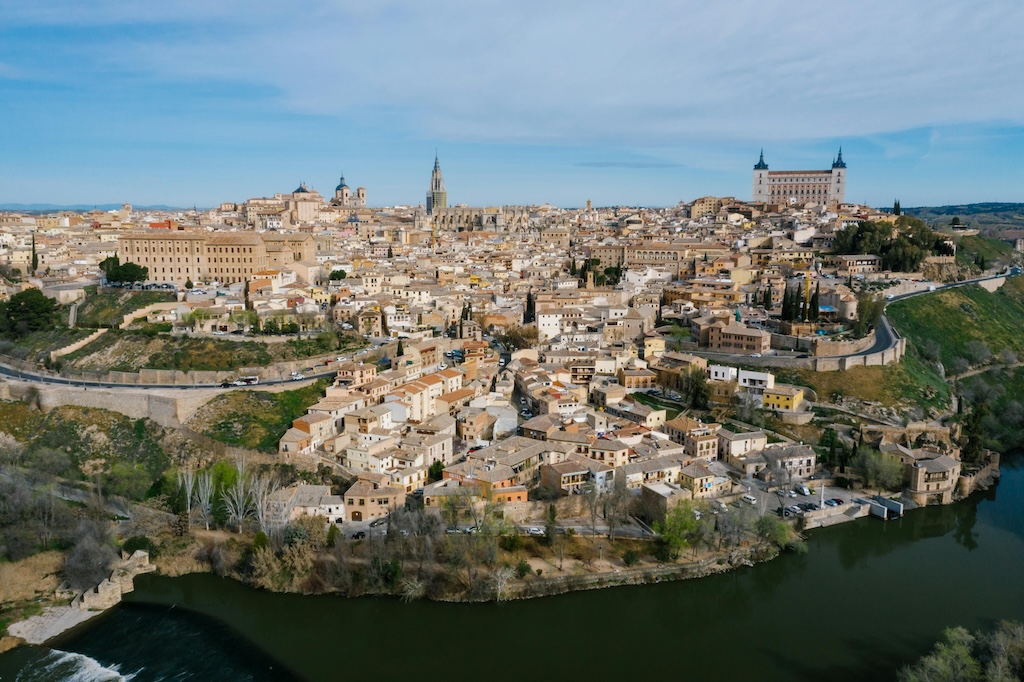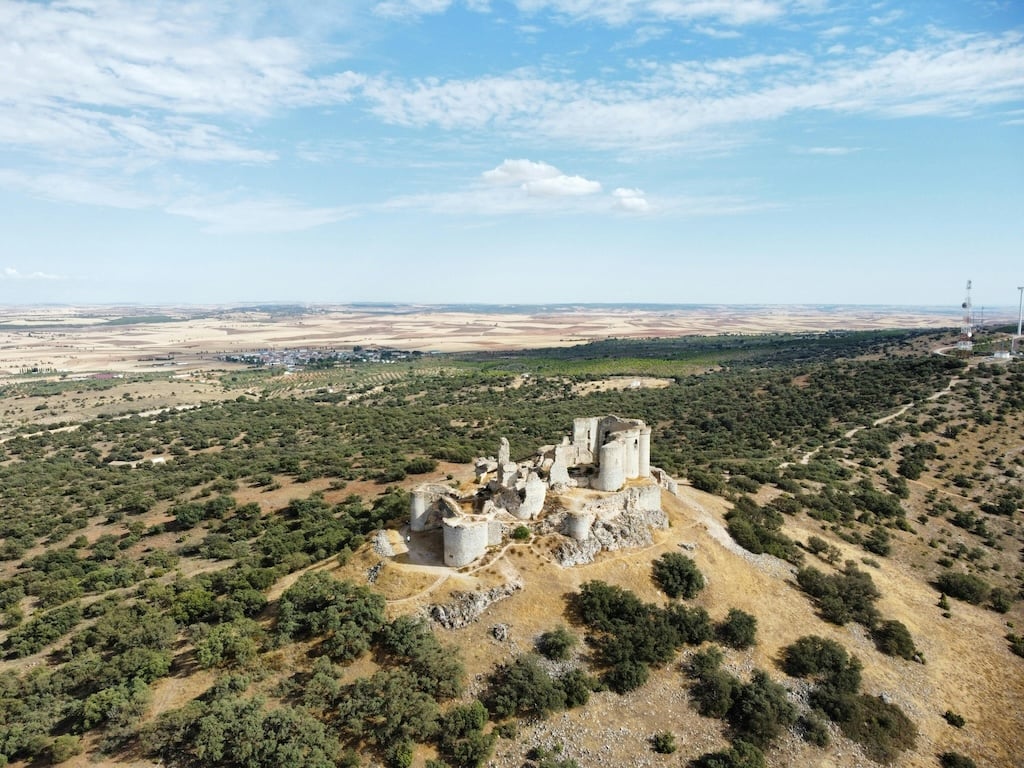Castilla-La Mancha may not be the first region that comes to mind when you’re trying to decide where to live, located in the middle of the country far from the coasts with vast underpopulated areas and lots of agriculture.
But it also offers an adventurous outdoor lifestyle, stunning historic cities and lots of fascinating culture.
So let’s find out if you see yourself en un lugar de La Mancha (somewhere in La Mancha) as Cervantes’ iconic Don Quixote novel goes.
PROS
Low cost of living
Castilla-La Mancha has a relatively low cost of living compared with other regions in Spain. Compared with the largest and some of the most expensive cities, Madrid and Barcelona, the cost of living in Castilla-La Mancha can be up to 30 percent lower.
According to cost of living website Expatistan, the cost of living in Toledo for example is 23 percent less than in the popular city of Málaga. Food there is 18 percent cheaper while transport and clothes are both 10 percent cheaper.
Good value housing
It’s not just the cost of living with regards to certain items that is less expensive in Castilla-La Mancha, but buying and renting homes are too.
Property portal Idealista states the average cost to buy a property in Castilla-La Mancha in September 2024 is €936 /m2. This is actually the cheapest out of all the 17 regions in the country. Compare this to Andalusia where you’d have to pay €2,235 /m2 or Valencia where you’d pay €1,985 / m2.
When it comes to renting, Castilla-La Mancha also offers a good deal. Idealista lists the average rental price at €7.1/m2, whereas places like Catalonia and the Balearic Islands are €17.4 and €18 /m2 respectively.

The historic city of Toledo. Photo Mikhail Nilov / Pexels
Good connections to Madrid
Castilla-La Mancha is a vast region with big distances between its main cities, but several of them have excellent connections to Madrid, such as the historic city of Toledo, just one hour away, or Cuenca with its UNESCO World Heritage Hanging Houses, one hour 30 minutes away. Living in either of these cities means easy access to all the culture, shopping and bright lights of the big city, whilst benefitting from a quieter pace of life and lower cost of living. Theoretically you could live in Castilla-La Mancha and commute to Madrid for work.
Advertisement
READ ALSO: Nine fascinating facts about Spain’s Castilla-La Mancha
Fascinating culture
Like many regions in Spain, Castilla-La Mancha has its own unique culture to explore and learn about. It may not be the culture you’re familiar with – of flamenco or paella, but it’s a place that offers a lot. From Mudéjar architecture and artisanal ceramics to puppet theatres and traditional music. It’s also known for its association with the legend of Don Quixote and its landscapes of old windmills. A great foodie region too, there’s delicious produce like Manchego cheese, pisto (similar to ratatouille), roasted lamb, wine and saffron. One of the best places to learn about its culture is at the Saffron Rose Festival at the end of October in the village of Consuegra.
Outdoorsy and quiet lifestyle
If you love nature and the outdoors, it could be an ideal region for you because much of the region is given over to the natural world. There are two main mountain ranges here – La Sierra de Albarracín and la Sierra de Cuenca, as well as several natural parks and biosphere reserves, such as the Tablas de Daimiel National Park, the Lagunas de Ruidera Natural Park and the Natural Park of Alto Tajo. So, if you’re into hiking, cycling and climbing, there are plenty of places to discover. There are only a handful of big cities here, the majority of it comprises small towns and villages.
A good place to integrate into local life
Castilla-La Mancha is not that popular with other foreigners like Andalusia or Valencia are for example, so you won’t find yourself stuck in a bubble here only hanging out with other foreigners and not learning the language properly. If you choose to move here you’ll be forced to speak Spanish and fully integrate into the local way of life.
Advertisement
Cons
Lack of job opportunities
Even though some of its cities are within easy reach of Madrid, the majority of places in Castilla-La Mancha don’t really offer good employment opportunities for foreigners. Many people here work in agriculture and livestock or manufacturing companies within the food sector. While it could be a good place to become self-sufficient by growing your own food, it may not necessarily lead to a good career progression if you move here.
Toledo and Cuenca are two exceptions, where you’ll find more work within the tourism sector – tour guides, and roles in hotels and restaurants, which may require English speakers. Having said that Castilla-La Mancha is probably more suited to people who work from home or those who went to set up their own businesses, perhaps in tourism.

Castilla-La Mancha is a vast and underpopulated region. Photo: Iván García Muneta / Pexels
Extreme weather
Castilla-La Mancha may not have that ideal Mediterranean climate that you’ve been imagining. It’s extremely hot in summer and bitterly cold in winter, which can get some getting used to. It’s also one of the windiest regions in the country, so much so that locals even have names for the 12 different types of wind that blow there.
Advertisement
No coastline
Many people want to move to Spain because of its excellent weather and outdoor lifestyle, and dream of spending days on the beach, but there’s no coastline in Castilla-La Mancha. In fact, located in the centre of the country, some places here are the furthest away from the beach you can get. This can be particularly tough in the summer with the sweltering temperatures and nowhere to go to cool off.
Advertisement
Limited transport links
Although there a good highways throughout the region and transportation routes do exist, train and bus service may be limited in some areas, which can make getting around difficult. The main cities of Toledo, Cuenca, Albacete and Ciudad Real do have high speed rail links, but if you’re living away from these areas, you’ll find it more challenging to travel around. Having you own car, is essential in many places.
Not many other foreigners to connect with
While this may be a pro for some people, it’s a con for others. With only 193,475 foreigners living in the region according to Spain’s National Statistics Institute (INE), it’s not going to be a place where you’ll find lots of foreign groups for support and making friends. There’s only around 1,000 Brits living in the region and around 500 Americans, so finding others who are in a similar situation may be tricky.






